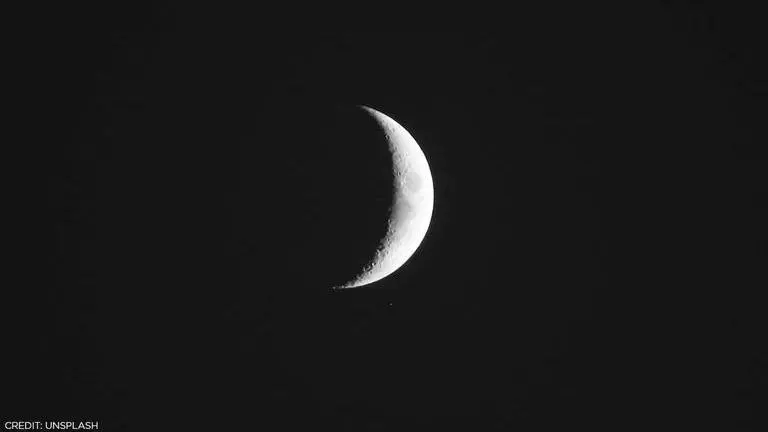Updated 8 September 2021 at 20:26 IST
ISRO's Chandrayaan-2 detects ice in the Moon's Permanently Shadowed Regions
The information was declassified during the two-day online lunar science workshop organised by ISRO that concluded on September 7.
- Science News
- 2 min read

Marking another remarkable achievement by the Indian Research Space Organisation (ISRO), scientists revealed that the Chandrayaan-2 spacecraft, which recently completed its second anniversary, has picked up 'unambiguous detetctions of water ice' in the less discovered regions of the Moon known as Permanently Shadowed Regions (PSRs). The information was declassified during the two-day online lunar science workshop organised by ISRO that started on September 6 and concluded on September 7.
What are PSRs?
The Permanently Shadowed Regions or PSRs are the northern and southern poles of the Moon, that receive zero sunlight which makes them the coldest lunar region. The poles have been untouched by humans ever since the Moon's formation.
The detection
As per reports, ISRO Chief K Sivan revealed that the Chandrayaan-2 spacecraft carries Dual Frequency Synthetic Aperture Radar (DFSAR) which maps surfaces using measurements of electrical properties of materials, and is capable to differentiate ice surfaces from the rough lunar ones. The DFSAR is one of the eight payloads sent to the lunar orbit. Interestingly, it is also the world's first full polarimetric radar that has ventured for a planetary mission.
Anup Das, part of the DFSAR team, called this discovery extremely essential as the melted ice around the region will reveal what kind of impacts the Moon absorbed in the past. Basically, the data and photographs transmitted via the orbiter high-resolution camera (OHRC) will be analysed to study the massive craters. The information was brought in public during an online ISRO workshop that was organised to effectively reach institutes, academia, and students along with the intention to engage the scientific community to analyse Chandrayaan-2 data.
Advertisement
Look at the tweet below
On September 6, 2021, inaugurating the Lunar Science Workshop 2021, Chairman, ISRO/ Secretary, DOS released three documents on Chandrayaan-2 related to the science results and data products.
— ISRO (@isro) September 6, 2021
Download them here: https://t.co/t8LQ8HZji1
Unchartered PSRs
Chandrayaan-2 was launched on July 22, 2019, that was aimed to explore the Moon's untouched southern pole by surveying the area using ISRO's Vikram lander. Unfortunately, the lander that was carrying the rover, crash-landed in September 2019 as the scientists lost control over it 500m above the lunar surface. However, ISRO's orbiter is still functional and is extracting and examining the lunar data in the polar orbit at an altitude of 100km from the Moon's surface.
(IMAGE CREDITS: PIXABAY)
Published By : Harsh Vardhan
Published On: 8 September 2021 at 20:26 IST
